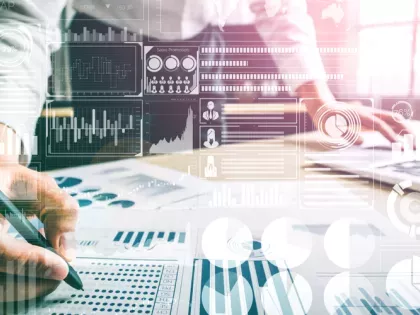Read about the latest cybersecurity news and get advice on third-party vendor risk management, reporting cybersecurity to the Board, managing cyber risks, benchmarking security performance, and more.
Insights blog.

Critical Vulnerabilities Discovered in Automated Tank Gauge Systems
Bitsight TRACE explores several critical vulnerabilities discovered in ATG systems and their inherent risk when exposed to the Internet.

You can’t reduce the cyber risks faced by your organization if you don’t know what you’re up against. That’s the purpose of a vulnerability probe.

There are many ways that a bad actor can infiltrate your IT infrastructure and begin sifting through your data. These vulnerable entry points are known as risk vectors and include insecure endpoints, unsupported mobile devices, unpatched systems, and more.

Gaps in security controls can be hard to detect. Misconfigured software, open ports, and unpatched systems all expose your organization to cyber risk. They also negatively impact your Bitsight Security Rating.

According to a Cybersecurity Ventures report, global cybercrime costs are expected to grow by 15% per year over the next five years — reaching $10.5 trillion USD annually by 2025. In light of this evolving threat environment and recent widespread security events, today’s cybersecurity leaders are under more pressure than ever to prove that their investments in their programs are actually paying off.

A couple of years ago, industry research firm Gartner introduced a new acronym—SOAR—into the cybersecurity nomenclature. SOAR stands for “security orchestration, automation, and response.” It’s not an individual tool, or even set of tools. Like ISO 27001, GDPR, FISMA, and others, SOAR is a cybersecurity framework organizations can use to create an effective risk mitigation strategy.

Now more than ever before, it’s critical to build a strategic security performance management program in which you take a risk-based, outcome-driven approach to measuring, monitoring, managing, and reporting on your organization’s cybersecurity program performance over time. Of course, in order to do so, you need an easily understandable framework through which you can conduct a cyber risk analysis and lead meaningful conversations on the business impact of your organization’s risk exposure.

Whether your organization is just beginning to develop your security performance management systems, or you already have a mature and established program in place, there is always room to innovate and improve the cyber risk monitoring tools you use.

There’s no question about it: Being exposed to cyber risk is an inevitable part of doing business in today’s world. In fact, a recent ESG study found that 82% of organizations believe that cyber risk has increased over the past two years.

Despite the best efforts from security and risk leaders, it can be extremely difficult to establish an efficient and effective enterprise risk management plan. As with anything that requires buy-in from the executive level, there has to be defined goals and clear paths the security team will take to make investments in their program feel worth it.

Cyber risk is everywhere. As organizations become increasingly interconnected — across business units, geographies, subsidiaries, remote offices, and third-party networks — the digital ecosystem is expanding rapidly. And this increased attack surface introduces a variety of new and evolving vulnerabilities.

The SolarWinds supply chain attack discovered in late 2020 was a wakeup call for security managers across all industries. The hack is shaping up to be one of the most impactful attacks against a critical supply chain partner in history.

As if the COVID-19 pandemic wasn’t bad enough, the unpredictable events of 2020 created the perfect storm for a huge escalation in ransomware attacks.

In light of recent widespread breaches and security incidents, such as the cyber attack targeting SolarWinds, security and risk managers are under more pressure than ever to prove that their cybersecurity investments are actually paying off.

Not long ago, corporate executives would give only passing thoughts to their organization’s cybersecurity postures. Leadership and board members would take notice in the wake of a major data breach, for example, or a couple of times a year as a “check the box” exercise to maintain compliance with regulations. Overall, however, cybersecurity analytics didn’t really garner much attention.

Effective communication between different members of your team can make all the difference when it comes to maintaining your desired security posture and preventing massive cyber incidents. Reports can play a critical role in these communications, serving as the central mechanism through which to align on the most significant issues and make more confident, data-driven decisions.